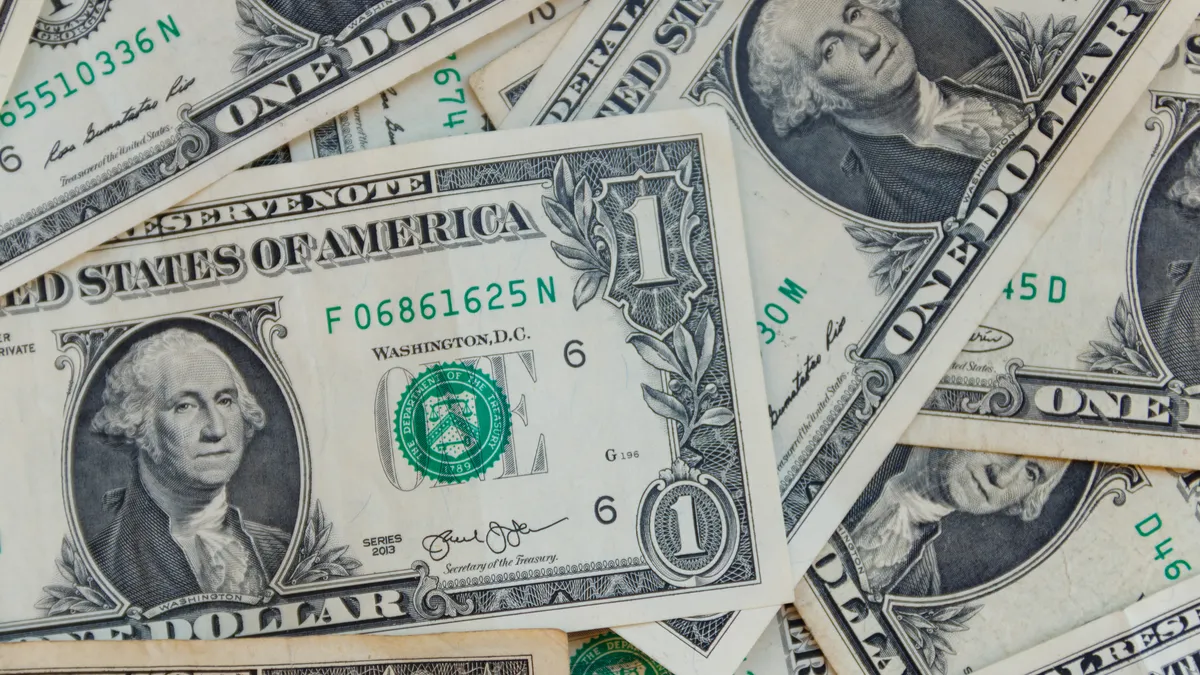Dive Brief:
- Consumer prices rose 0.5% in January in the biggest gain in three months, and two Federal Reserve officials said Tuesday the central bank may need to intensify the most aggressive monetary tightening in four decades by increasing interest rates more than expected.
- The Consumer Price Index, fueled by energy and shelter prices, increased last month at a 12-month pace of 6.4%, a slight slowing from the 6.5% annual rate in December, the Labor Department said Tuesday. Still, during the past three months CPI excluding volatile food and energy prices increased at a 4.6% annual rate compared with a 4.3% pace during the three months ending in December.
- “The most important risk I see is that if we tighten too little, the economy will remain overheated and we will fail to keep inflation in check,” Dallas Fed President Lorie Logan said in a speech after release of the CPI data. “We must remain prepared to continue rate increases for a longer period than previously anticipated, if such a path is necessary to respond to changes in the economic outlook or to offset any undesired easing in conditions.”
Dive Insight:
Growth in U.S. payrolls and steady spending by consumers indicate that the economy remained robust last month even though the Fed raised the federal funds in 2022 from near zero to a range of 4.25% to 4.5%.
The U.S. added 517,000 jobs in January — more than twice the number forecast by economists — and unemployment fell to 3.4%, the lowest level since 1969.
“Today the labor market remains extremely tight,” New York Fed President John Williams said in a speech Tuesday.
Consumer spending, which makes up nearly 70% of the economy, strengthened last month, according to the Bank of America Institute. Bank of America credit and debit card spending rose 5.1% on an annual basis in January compared to a 2.2% year-over-year rate in December.
An increase in the minimum wage in more than 20 states as well as an 8.7% boost last month in social security payments — the largest in more than 40 years — prompted consumers to step up spending, the Bank of America Institute said.
Aiming to cool the economy and curb inflation, the Fed on Feb. 1 raised the main rate by a quarter percentage point to a range of 4.5% to 4.75% and indicated plans for more increases during coming policy meetings.
“Inflation is normalizing but it’s coming down slowly,” Richmond Fed President Thomas Barkin told Bloomberg Television on Tuesday. “I just think there’s going to be a lot more inertia, a lot more persistence to inflation.”
“If inflation persists at levels well above our [2%] target, maybe we’ll have to do more,” he said.
Logan, Fed Chair Jerome Powell and other policymakers have voiced concern in the past several weeks about high inflation in prices for services excluding housing. The category of services includes entertainment, health care and transportation, and encompasses about half of personal consumption.
“Core services inflation excluding housing has been running in a range of 4% to 5% for close to two years, with little sign of improvement,” Logan said.
“You could say this is the core of the inflation problem,” she said, adding that a lack of improvement in the category would settle inflation at close to 3% even if prices in other categories slow to their pre-pandemic inflation rate.
Fed officials in December projected that they will push up the benchmark interest rate to 5.1%. this year.
“The inflation rate remains far too high,” Williams said. “Inflation is well above our 2% target and it is critically important that we reach that goal.”
Reducing price pressures “will likely entail a period of subdued growth and some softening of labor market conditions,” Williams said, predicting economic growth this year will slow to 1% and unemployment will rise to between 4% and 4.5%.
“When central banks aren’t sufficiently proactive in addressing high inflation, the road back to price stability is longer, the labor market is weaker and the scars on the economy can last long after inflation is finally reduced,” Logan said.
At the same time, Philadelphia Fed President Patrick Harker suggested in a speech Tuesday that the Fed may be close to pausing its policy tightening.
“In my view we are not done yet . . . but we are likely close,” he said. “At some point this year, I expect that the policy rate will be restrictive enough that we will hold rates in place and let monetary policy do its work.”












